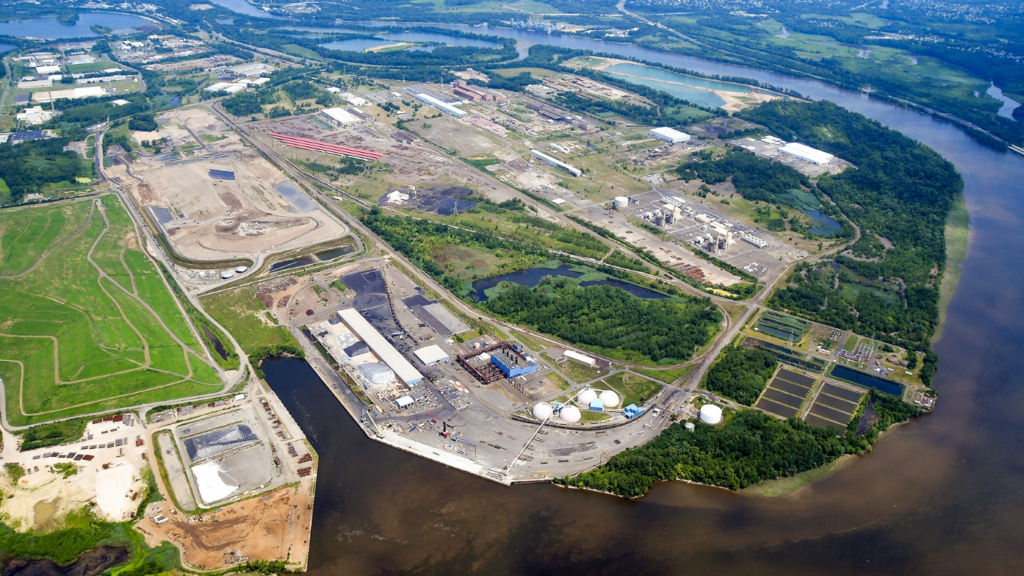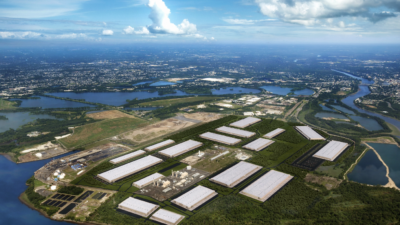When it comes to managing industrial real estate, particularly surplus assets and holdings, it’s critical to take a comprehensive and strategic approach. Whether selling, leasing, or repurposing a property, understanding the key elements of zoning, infrastructure, environmental history, and market nuances is essential for determining its value.
This is the first part of a two-part series where we’ll focus on how to evaluate surplus assets and the key aspects of due diligence. In Part 2, we’ll dive into the specifics of property disposition.
To illustrate the complexities and importance of this process, we’ll refer to a real-world case study of a transaction Colliers recently led for United States Steel Corporation’s disposition of the Keystone Industrial Port Complex (KIPC) in Fairless Hills, PA. This 1,800-acre site with a 70+ year industrial history offers a prime example of how to evaluate an industrial property with significant legacy factors.
Zoning: Understanding the Land’s Potential
One of the most fundamental factors in evaluating industrial property is its zoning, which dictates how land can be used and can significantly impact the property’s marketability.
In some regions, there may be limited availability of industrial-zoned land, which could make it especially valuable. It’s important to know what types of developments are allowed “by-right”—that is, without needing additional permits or rezoning.
The KIPC, for instance, had Heavy Industrial Zoning which permits a wide variety of uses and no building height restrictions “by-right” and was a key asset when positioning the site for sale.
Infrastructure: Critical Utilities and Transportation Access
Having the right infrastructure is key to making surplus property valuable in today’s market. Access to critical utilities like power and water, as well as transportation, can make even an underutilized site highly attractive.
 Tom Golarz
Tom Golarz
In the current environment, access to heavy power can be a game-changer as properties suitable for high-energy operations—such as semiconductor manufacturing or data centers—are increasingly in demand. If the property can support such operations, it may draw interest from specific industries looking for sites with specialized utility needs. In contrast, properties lacking utility access may need costly upgrades.
Another major infrastructure consideration is rail access. Rail service is especially valuable for businesses dealing in heavy or bulk goods, as it offers a cost-effective and efficient transportation option.
The KIPC site had 250 Megawatts of power and had 75 miles of rail on-site that was serviced by two Class 1 rail providers. Both of these factors were unique amenities that were taken into consideration during the evaluation of the property.
Environmental & Site History: Understanding Legacy Issues
Environmental considerations can often be the most complex aspects of industrial real estate. It’s essential to understand the property’s past, as environmental liabilities can significantly affect its value and attractiveness to potential buyers.
Ensure appropriate environmental assessments — such as Phase I and Phase II Environmental Site Assessments (ESA) — have been conducted. These assessments help identify potential environmental risks and liabilities.
For KIPC, thorough environmental characterization had been carried out by the Seller, and substantial investments were made in site due diligence. The team worked with engineering professionals to create a master development plan that accommodated the environmental concerns, using detailed assessments like wetland delineations, flood plain studies, and utility infrastructure analysis.
Each state or region may have different regulations regarding environmental contamination, and how sites are cleaned up can vary significantly. Engaging with environmental consultants and legal experts as part of the due diligence will be crucial in navigating these challenges.
In some cases, liability can be transferred to a buyer through a contractual agreement. However, it’s important to understand the impact of liability transfer on your transaction – What liability will Buyers assume? Will this impact pricing? Evaluate environmental insurance, such as Pollution Legal Liability (PLL) policies, early on in the process – it is relatively inexpensive and provide protection for both parties.
Underwriting Your Asset Like a Buyer Would
Finally, it’s crucial to look at the property through the eyes of a potential buyer. What are they considering when deciding whether to purchase or lease?
Engaging with local experts can help drill down the key market dynamics, including rents, desired returns, and construction or development costs.
While maximizing the size of the development might seem like the best approach, focusing on marketability is critical. Working with civil engineering teams to determine site constraints—whether topographical, environmental, or regulatory—and use that information to model the maximum marketable project size.
KIPC was positioned as a heavy-manufacturing park, and Colliers saw the site’s highest and best use as bulk industrial warehouse space, given the strength of the bulk industrial sector. A detailed market analysis helped define the redevelopment potential, which was ultimately key to securing the sale.
Make Informed Decisions and Maximize the Value
From zoning and infrastructure to environmental concerns and market dynamics, understanding each element in detail will help make informed decisions and maximize the value of surplus real estate holdings. Engaging with experts—whether in legal, environmental, or market analysis—can help you navigate these complex factors and position the property effectively in today’s competitive industrial real estate market.

 Michael Golarz
Michael Golarz


 Craig Hurvitz
Craig Hurvitz
 Lauren Pace
Lauren Pace Ronna Larsen
Ronna Larsen